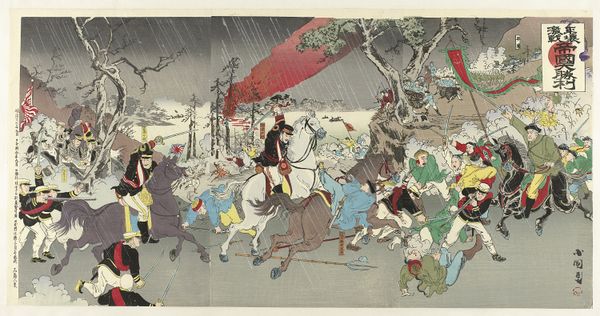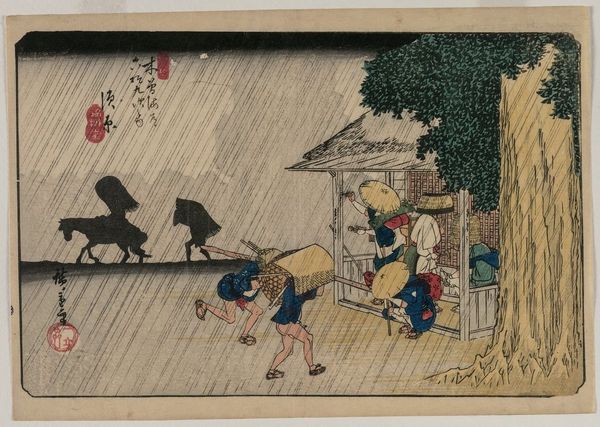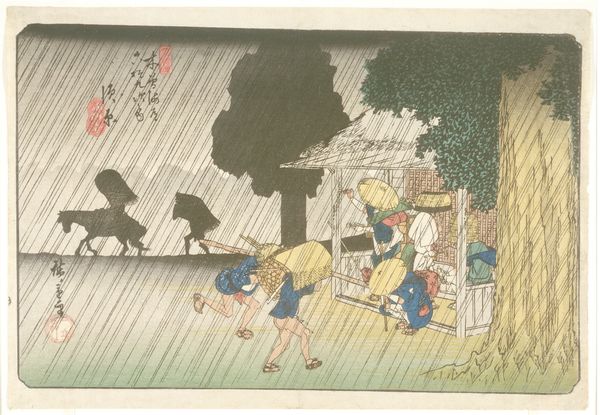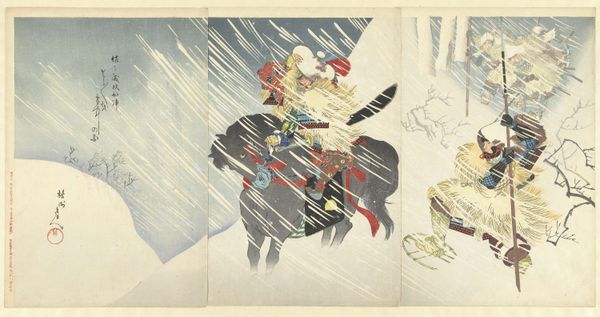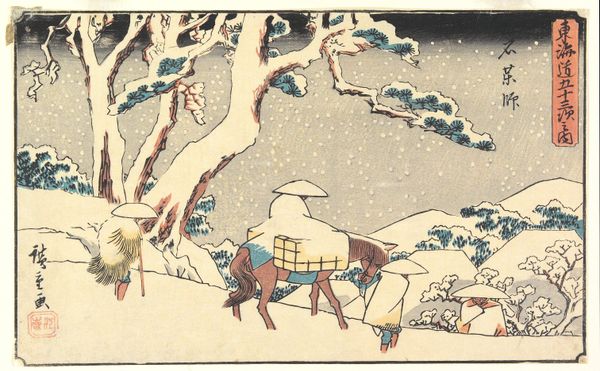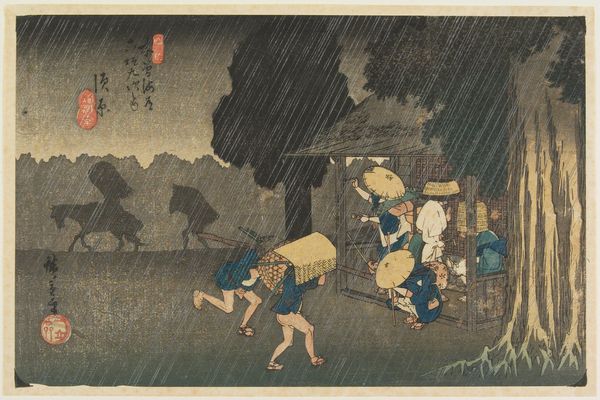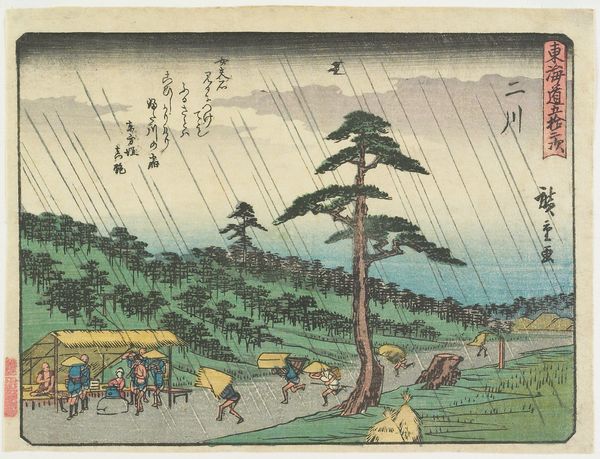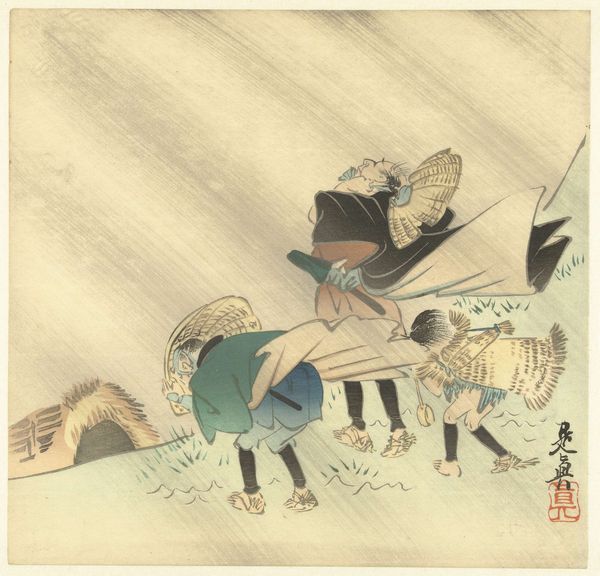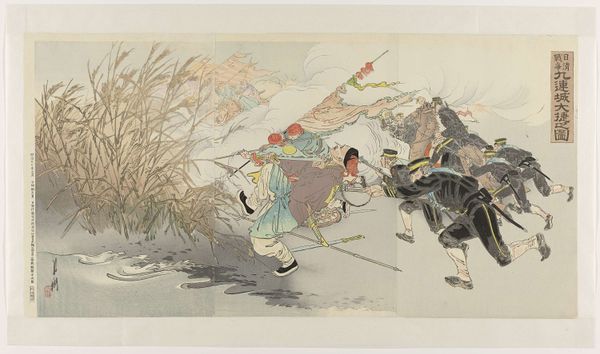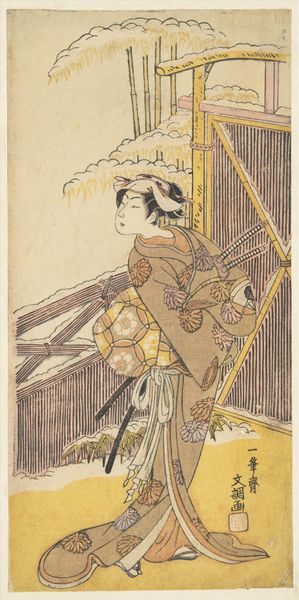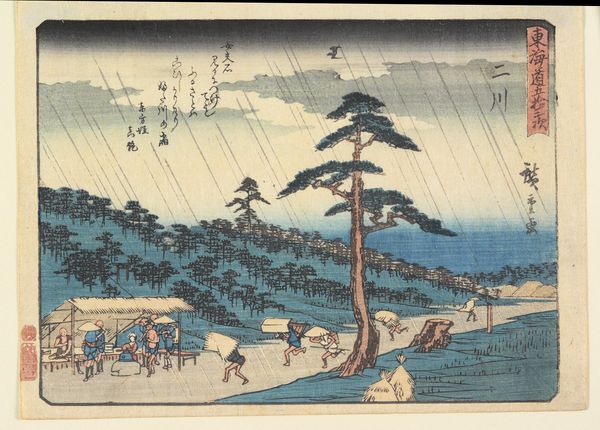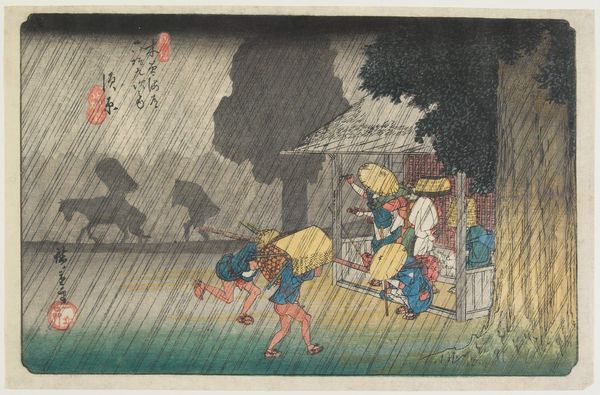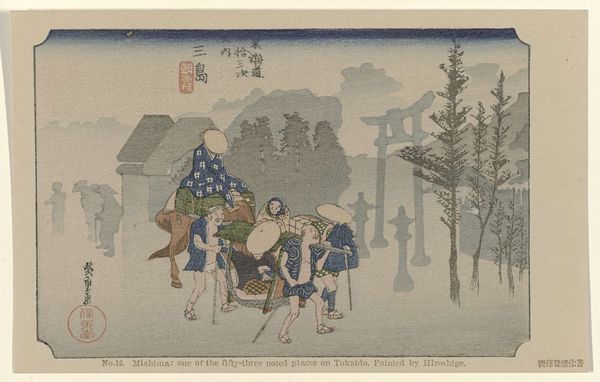
print, ink, woodblock-print
# print
#
asian-art
#
landscape
#
ukiyo-e
#
figuration
#
ink
#
woodblock-print
Dimensions: 10 1/16 × 15 1/16 in. (25.5 × 38.3 cm) (image, sheet, horizontal ōban)
Copyright: Public Domain
Katsushika Hokusai created "Aridōshi Shrine," a woodblock print, during a time when Japan was experiencing significant social and cultural shifts. In this print, we observe a procession braving a downpour, their figures rendered with a delicate balance between realism and stylization. The umbrellas shield the figures, yet cannot fully protect them from the elements; this speaks to the delicate balance between social status and the vulnerability of the human condition. Hokusai’s work often blurred the lines between idealized landscapes and the realities of daily life. His distinctive style challenged traditional artistic norms and offered a view of Japanese society that was both intimate and expansive. In "Aridōshi Shrine," Hokusai invites us to reflect on our own relationship to the world around us. To embrace both the beauty and the challenges it presents.
Comments
minneapolisinstituteofart almost 2 years ago
⋮
A legendary episode that took place in front of Aridōshi Shrine (in modern-day Osaka) provided the subject of this composition. One rainy night, the famous poet Ki no Tsurayuki (ca. 868–ca. 945) came to Aridōshi Shrine while making his way back to Kyoto. He had planned to stop and pray but changed his mind because of the inclement weather. His horse, however, suddenly collapsed at the shrine’s gateway. Tsurayuki took this as a sign that his neglectful attitude had offended the shrine deity. He quickly offered prayers and recited a poem dedicated to the deity. As he uttered the final syllable, his horse miraculously stood up, and Tsurayuki was able to proceed on his way.
Join the conversation
Join millions of artists and users on Artera today and experience the ultimate creative platform.
